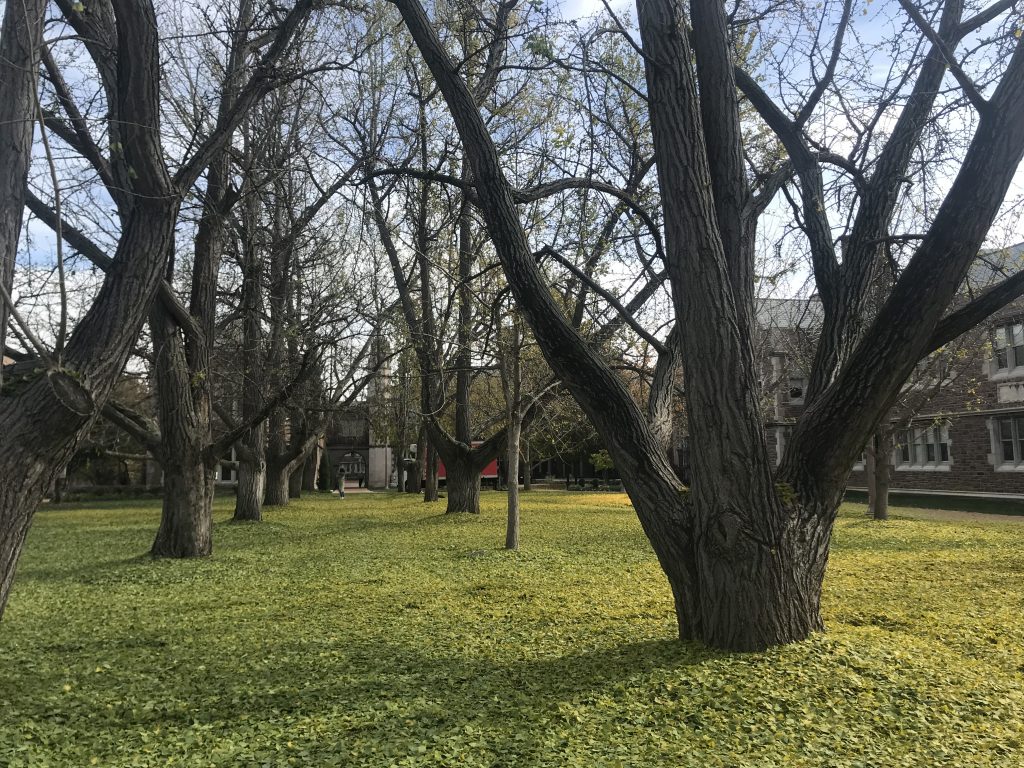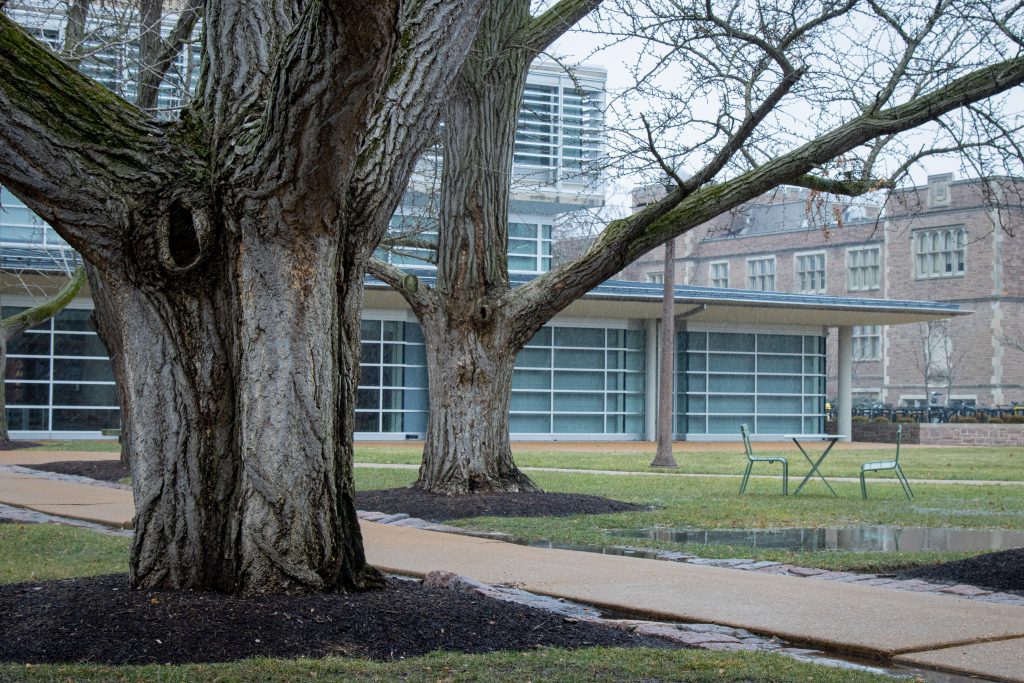Scene
Rooted in St. Louis: The incredible dinosaur tree
In this series, I will be highlighting the plant life of Wash. U. and of St. Louis, the people who put them there, and why you pay more attention to the greenery around you.
You saw them, but before you saw them you smelled them. The scent of bile and garbage, fruit scattered across the sidewalk like big salmon eggs, that pop into orange mush under your feet. Yet their unpleasant spell is offset by their spectral beauty — elegant, fanned leaves, skeletal branches; an echo of the cretaceous.
Campus is full of ginkgo, and indeed all of St. Louis is spotted with these incomparable trees. But as interesting as they appear and smell, the history and biology of them is just as fascinating. In explaining to you some of the fascinating evolutionary history of the ginkgo, perhaps I can make the smell of its fruit a little sweeter to you.
 Photo by Mo Kleinhenz
Photo by Mo Kleinhenz The ginkgo tree is old. Dinosaur old. The ginkgo is a “living fossil. It exists today in mostly unchanged from fossilized relatives separated by 100 million years. For some perspective, anatomically modern humans emerged somewhere around 130,000 years ago meaning ginkgo have been around nearly 1000 times as long as we have. They emerged as dinosaur food, and now they grow essentially unchanged in modern cities. That gives me goosebumps. The ginkgo is so distantly related to other trees that it is in its own class, order, family and genus, all-encompassing one remarkable tree species.
But my favorite evolutionary fact is the ginkgo’s status as an “evolutionary anachronism” due to its close evolutionary relationship with other extinct organisms — termed by Connie Barlow as “Ghosts of Evolution.” You see, most fruit trees coevolve with pollinators who eat their fruit and spread their seeds — think of squirrels burying acorns, or monkeys spreading fruit seeds through their feces. The ginkgo tree used to have a partner too, an extinct rodent genus named Ptilodus. But they have been extinct for some time, and the ginkgo was left without its partner. Gone too are their pollinators, cretaceous insects with the delightful name Juracimbrophlebia, whose wings mimicked the leaves of certain ancient ginkgo varieties. Now wild ginkgos are pollinated by the wind and only exist in small patches of eastern China.
 Curran Neenan | Student Life
Curran Neenan | Student Life The ginkgo trees on a rainy winter day.
And yet the ginkgo is one of the most commonly cultivated trees in the world. It is loved by humans for its elegant leaves and its medicinal applications, for its idiosyncratic beauty. In fact, for thousands of years, they have been cultivated by monks in China, Japan, and Korea. While in the wild it only exists in limited places, it thrives in cities across the world. The fact that we continue to plant these trees in densely populated areas despite their foul odor further enforces how compelling it is — people put up with its fruit because something about the ginkgo is enchanting. In a way we have become the new partner to the ginkgo — merely by its aesthetic merit, the species has convinced us to spread its genes to their greatest extent since dinosaurs walked the earth. The ginkgo is a tree that lasts, a survivor. A testament to their durability, the ginkgos in Hiroshima were among the only living trees near the blast to survive. A memorial to the enduring power of life.
And of course here at Wash. U. we have Ginkgo Allée, that corridor of monstrous ginkgo now nearing one hundred years old. These trees are embedded into the fabric of campus as much as any building, planned in conjunction with the Collegiate Gothic style of the Architects Cope & Stewardson. They set a mood on campus — in the summer they are lush and almost tropical, in autumn shockingly yellow, while winter strips them down to their twisted trunks. They are architecture, and they are nature. Not only are these plants cretaceous remnants and hangers-on and smelly nuisances, but they also have become structural installations on campus. The landscaping and flora of Wash. U. have, to me, always been the campus’ most beautiful feature. Unlike cold stone or brick, these creatures live and breathe.
I could go on longer about complexities and odd little stories about the ginkgo — how its formal spelling originated in mistranslation embedded into taxonomic tradition, about its religious significance in Buddhism, about the properties of its wood, or about its medicinal uses. That is part of why I chose the ginkgos as the subject of the first article in this series — it is so obviously interesting. Just by looking at the ginkgo, you can tell that it’s different, but the more you look the more you find.
However, this is one way in which the ginkgo is not so unique. Every plant you pass by on campus or in Forest Park, every shrub and tree, flower and bush, every weed and every blade of grass has a hundred stories to tell, and yet most people walk by without giving them a second thought. They fade into the background, as pleasant and meaningless as hotel artwork in most people’s minds. That is what I would like to change — by focusing on the plants that surround us, how they came to be, and who put them there, I hope to give you a greater appreciation for how their lives enrich your own.
